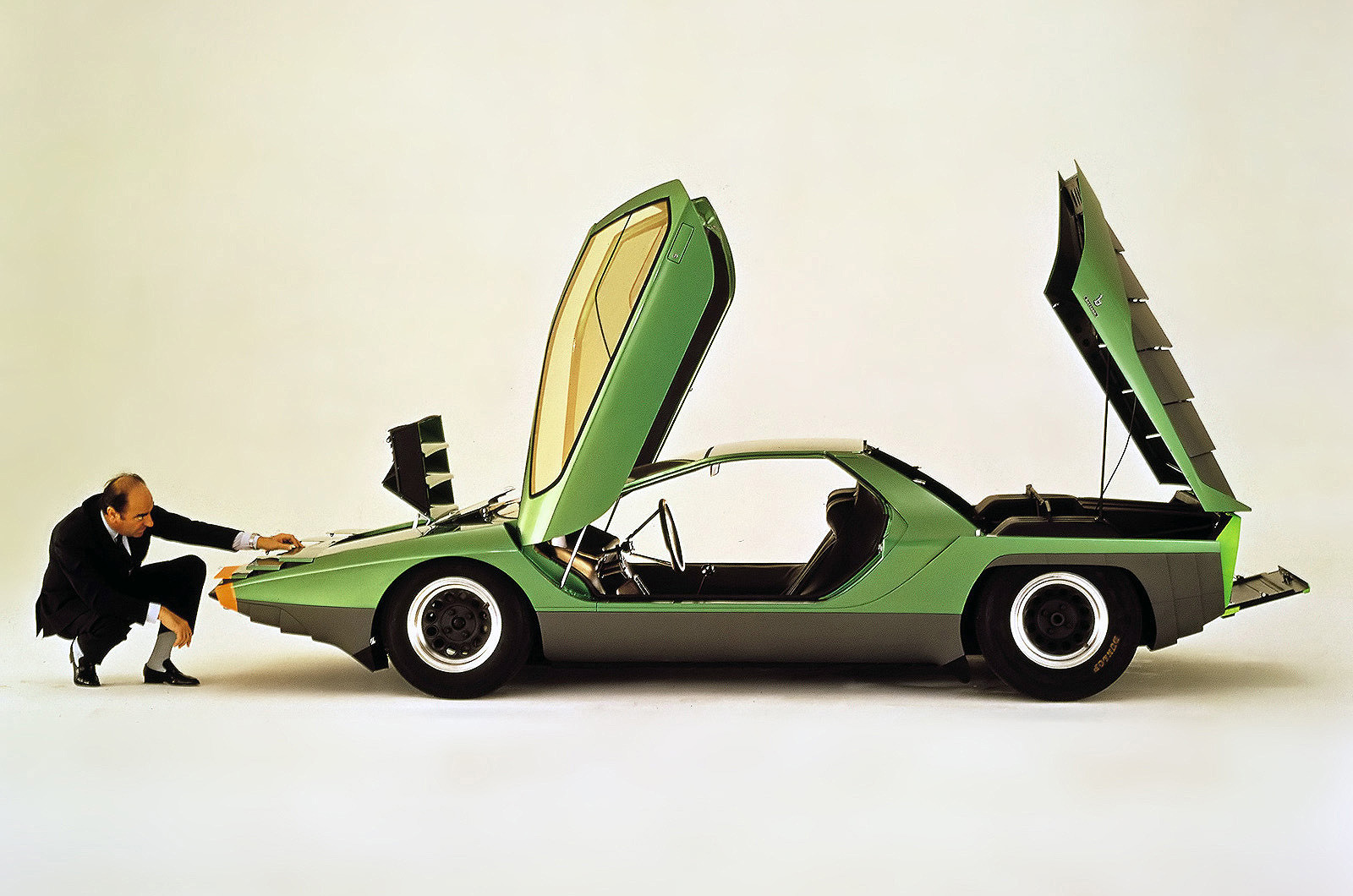The most important concept cars ever created
Slide of Too often, the term ‘concept car’ is now used to describe a thinly veiled production model that’s about to hit showrooms. But it wasn’t always like that; there was a time when the description was reserved for the most cutting-edge designs that showed just how fertile an imagination could be. Here we take a look at more than eight decades of some of the most forward-thinking, influential concept cars ever created, but even with 10 times as many entries we could only ever hope to scratch the surface. Enjoy the ride: Slide of Buick Y-Job (1939) General Motors’ Y-Job is now considered to be the world’s first concept car; it wasn’t, as that title going to the Volvo Venus Bilo of 1933. But the Y-Job did make GM’s design boss Harley Earl famous. Undeniably forward-thinking, the Y-Job featured hidden headlights, electric windows and a powered roof, concealed under a hard tonneau, and setting out overall design cues for American cars that would emerge after World War Two. Slide of Buick LeSabre (1951) For an encore to his Y-Job, Harley Earl (pictured) came up with the LeSabre, which perfectly captured the optimism of the jet age and America’s long post-war boom. Sitting a foot lower than contemporary production cars, the 335bhp V8-equipped LeSabre came with a wrap-around windscreen, hidden headlights and huge tailfins that set a trend for America’s Big Three throughout the 1950s. It also incorporated a powered roof that could be activated automatically in the event of rain. It also brought in a fashion for jet-age American concepts - and production cars - that would last for over a decade. So strap yourself in for the next few cars in this story: Slide of Ford XL500 (1953) With push-button automatic transmission the XL-500 was supposed to provide effortless driving. The goldfish bowl problem presented by all that glass would be resolved by the then emerging technology of air conditioning that it featured. Standard equipment also included a telephone and built-in jacks in the event of a puncture. Slide of Alfa Romeo BAT 5 (1953) America didn’t have the concept car monopoly. Italian design house Bertone produced a range of groundbreaking concept cars during the 1950s, of which this is perhaps the most striking. The concept pursued extreme aerodynamics – it had a Cd drag coefficient of just 0.23 - and light weight to move the envelope of the possible. It succeeded; despite a modest 100bhp engine, this 1100kg car could deliver a 120mph top speed. The BAT 7 the next year had a drag co-efficient of just 0.19. Slide of Buick Wildcat II (1954) With its ‘flying-wing’ front end and glassfibre construction the Wildcat II was definitely a car of the future when it appeared in 1953 – the same year as the original Corvette. Focus on the centre section of this concept and you can see how similar it is to the earliest ‘Vettes. Slide of De Soto Adventurer II Coupé (1954) The brief with this one was to come up with something super-slippery rather than ostentatious. As a result the Adventurer’s clean lines are very understated but those afterburner-inspired tail lights give a hint of what was to come with later Chrysler concepts. Slide of Ford FX Atmos (1954) The FX stood for Future Experimental, those spears on the front were aerials to help control the car to stop it running into vehicles in front, and the ‘Atmos’ was taken from atmosphere, which Ford said “came from free and unlimited creative thinking”. With a glass canopy, seating for three and a pair of aircraft-style fins, this was truly a jet-age - or even space-age - design. Slide of GM Firebird I (1954) The first of three General Motors Firebird concepts, this one featured a single-stick control system which dispensed with the steering wheel, accelerator and brake. Because it was located in the middle of the car either the driver or passenger could operate it; power came from a gas turbine which could be used to power a house via a built-in generator. And just look at it… Slide of Ford Mystere (1955) You wouldn’t want to have to fit a new windscreen to this beauty as it stretched right the way round the car from behind each door. To get in and out the whole vehicle tilted up as a canopy. The cabin was air conditioned and power came from a rear-mounted gas turbine. Slide of Lincoln Futura (1955) Best known for its starring role in the original Batman TV series, the Futura deserves a place in this story for looking like nothing else thanks to its twin Plexiglass domes along with fins front and rear. Ford spent $250,000 (around $2.5 million in today’s money) building this 300bhp V8-powered running concept which also featured a push-button automatic transmission. Slide of Buick Centurion (1956) The rear end of this car was clearly inspired by a jet fighter, with all of its lines converging on a single spot. This deserves special

This is another headline indexed and brought to you by the AUTOMUNDO website.
